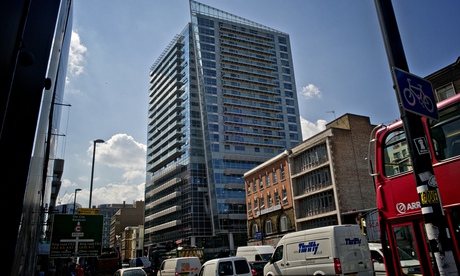‘Poor doors’: not the worst thing about social housing
Separate entrances are nothing new, and the truth is that social housing providers demand them. Oliver Wainwright on why we need to think outside the apartment block to solve this modern-day apartheid
"We are not snobs," declares a prim housewife on a 1930s newsreel, stiffly posed on her doorstep, flanked by windows hung with neat net curtains. "But we do not wish our streets to become a perfect bedlam." The camera pans to reveal a 7-foot-high brick wall a stone's throw from her door, built right across the street and topped with iron spikes. It was installed in 1934 by the residents of a North Oxford estate to protect their homes from council tenants, who had recently moved into houses nearby as the result of slum clearance. The Cutteslowe walls were deemed illegal and finally demolished in 1959, but their descendants live on in new segregated communities, with their separate entrances and divided facilities, as a Guardian investigation revealed this week.
This divisive tendency is now embodied in its most extreme form in London's slick developments on the City fringe, such as One Commercial Street, a glassy behemoth near Aldgate that has already been nominated for the Carbuncle Cup, the award for the ugliest building of the year. Here, in a modern-day reenactment of North Oxford's apartheid wall, the entrance for lower-income tenants is banished to an alley near the bins, while residents of the luxury private units enjoy a marble-lined, concierge-tended lobby at the front.
Continue reading...
SOURCE: Architecture and design blog | The Guardian - Read entire story here.
